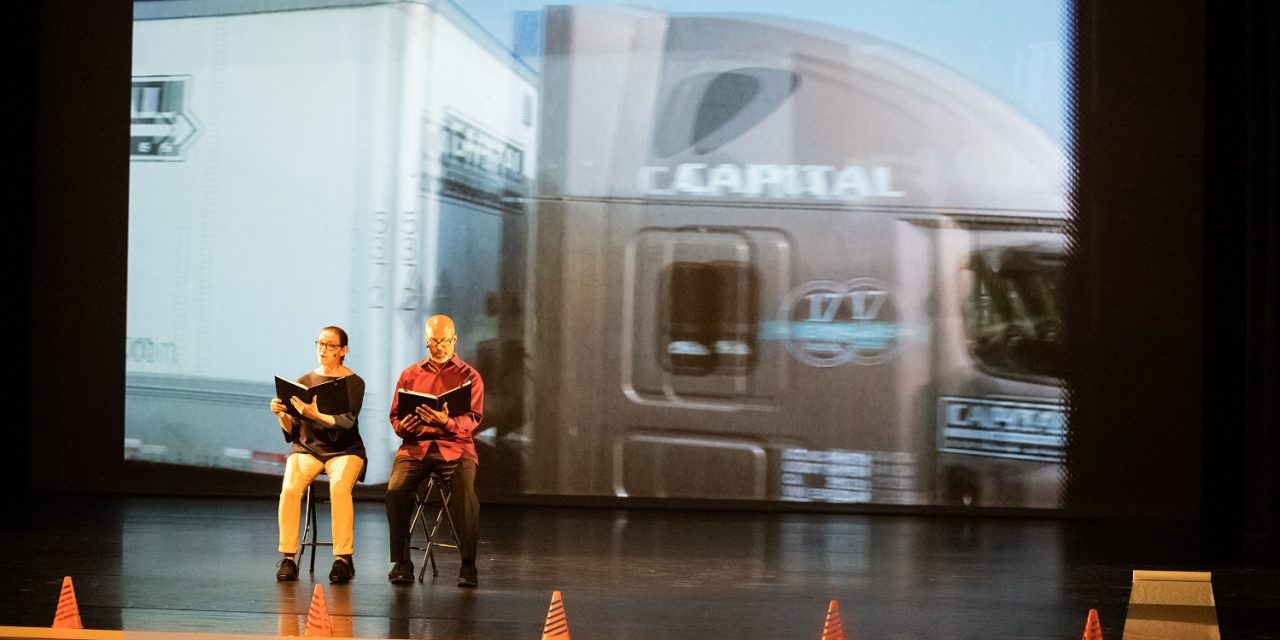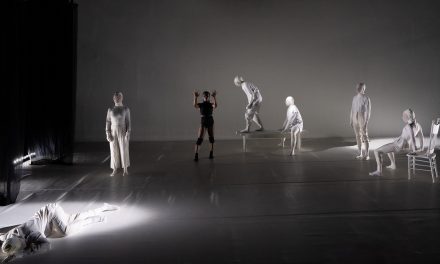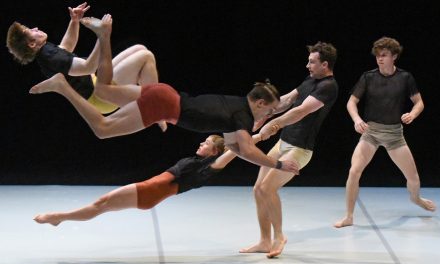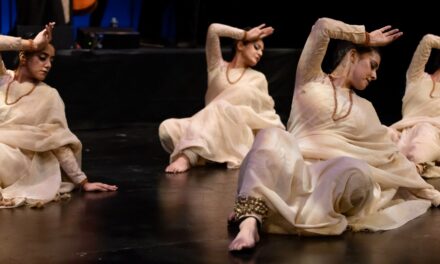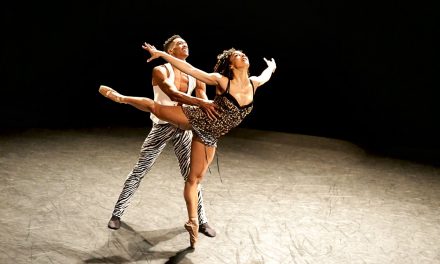If there is any question that this country has penal system that needs over hauling, take a look at these statistics: In the United States there are 1,833 state prisons, 110 federal prisons, 1,722 juvenile corrections facilities, 3,2134 local jails, 218 immigration detention facilities, 80 Indian country jails imprisoning a total of 2.3 million people, and as of 2016, the U.S. had the highest incarceration rate in the world (655 per 100,000 population).
Suchi Branfman choreographer, and Ernst Fenelon, Jr. have been collaborating on Angee’s Journey since 2018. Branfman had been invited in to the California Rehabilitation Center in 2016 to work with men who are known as insiders; men and women who are incarcerated within a jail or prison. At the time, Fenelon was program coordinator for Prison Education Project, which runs limited programming at Norco prison. Prior that he, however, Fenelon had spent 14 years as an insider, being relocated from one penal facility to another. On March 3, 1991 – the same day that Rodney King was brutally beaten by police – Fenelon was shot by police and arrested in Los Angeles. Both men were taken to the same LA central jail.
For many years, Fenelon’s mother, Angee Fenelon, made a monthly round-trip from Los Angeles to the California Medical Facility, located in Vacaville, between Oakland and Sacramento, to visit her son. It was a total of 800 miles and each way totaled approximately 12 hours. When one adds in the time she spent with her son, Angee’s single round-trip to spend time with Fenelon involved over 40 hours of her time. Fenelon was incarcerated for 14 years, and Angee made this trip alone. It is truly an example of a mother’s love and belief in her son.
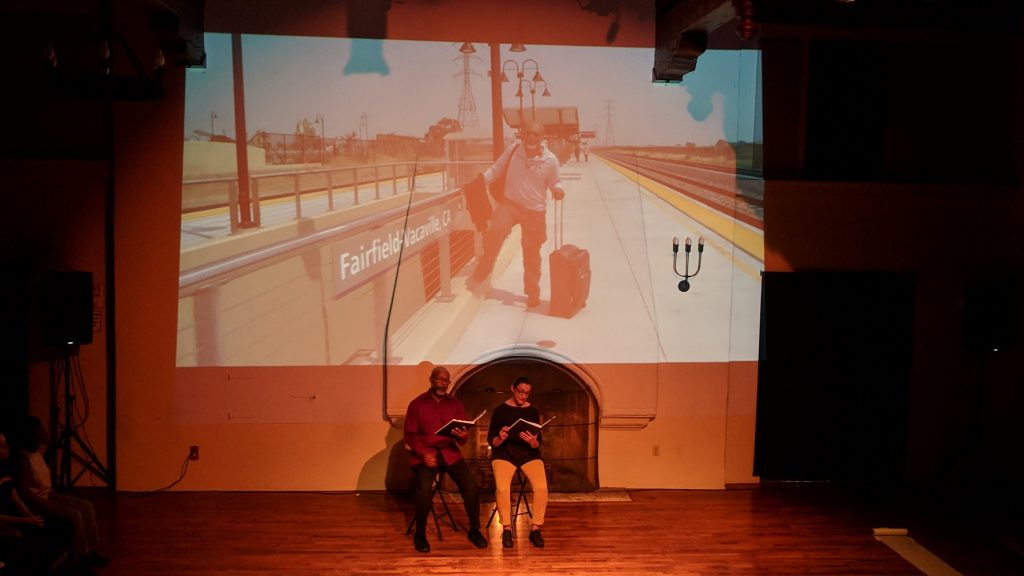
Ernst Fenelon Fenelon, Jr. and Suchi Branfman in “Angee’s Journey” – Photo: Roger Martin Holman for LA Dance Chronicle
Fenelon is now a published author, a Transformational Life Coach, inspirational public speaker, moderator, facilitator, instructor, criminal justice reformer, and happily married with a son named Jeremiah. In the summer of 2018 Fenelon and Branfman began collaborating on what would become an extraordinary work titled Angee’s Journey. I have covered a few of the work’s iterations over the years and on October 30, 2020 was at the virtual screening of the newly created documentary of the making of Angee’s Journey followed by a discussion and Q&A with Branfman, Fenelon and other artists involved in the work: Tom Tsai (dancer/videographer/editor), Amy Oden (dancer) and Anna Paz (dancer).
Near the end of the documentary it states, “Angee’s Journey has been a three-year process, created and re-created, cast and re-cast, exchanging and developing roles in support of telling the story”. It is a heartwarming tale and Tom Tsai has created a beautifully edited documentary that traces the entire process of the creation of Angee’s Journey by chronologically weaving both rehearsals and performances. One experiences movements of the creation of a section that seamlessly fades into the performance of that section. With this process, the viewer is told the story of Angee’s traveling while experiencing the retracing of it and watching the finished work. Usually one sees the process followed by the performance, but here we see both as near to being side by side as possible.
The performance work of Angee’s Journey includes Branfman, Fenelon, three dancers, Angee herself and Fenelon’s son Jeremiah. We hear the recorded voice of Angee as she explains parts of her trip and how when she first visited her son after he had been incarcerated, she washed the tears from her face and redid her makeup before going in to see him. She did not want him to see her cry.
We also hear Branfman and Fenelon read text that explains the story behind the making of this work, the statistics that I began this article listing and the trains, buses and trains that Angee had to take to make her monthly trip, and that the performers also took to recreate and experience it. For Fenelon, it was a way to walk in the shoes of his mother and help him better understand the sacrifice that she made in order to visit him and to show that she believed in him.
“She believed in me until I could re-believe in myself,” Fenelon said during the prescreening talks.
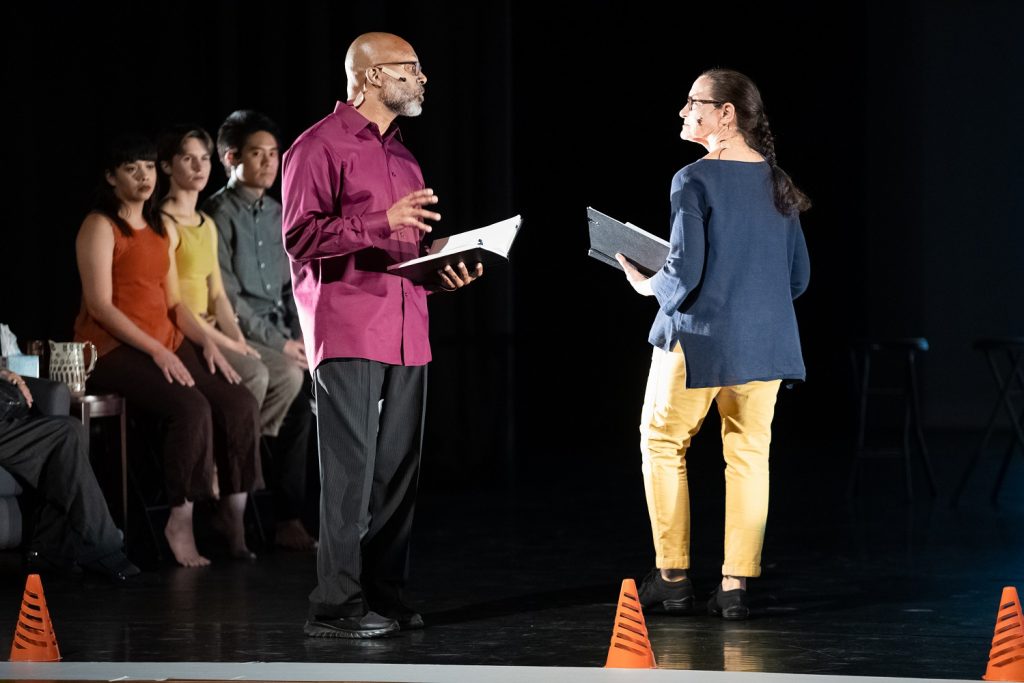
Dancing Through Prison Walls – “Angee’s Journey” – Dancers: Ernst Fenelon Jr., Suchi Branfman, Amy Oden, Anna Paz, Tom Tsai – Photo by David Torralva
The documentary of Angee’s Journey was created in 6 Chapters and an Epilogue. In Retracing Angee’s Journey, Branfman and Fenelon explain the different modes of transportation and hours spent. For Ernst’s Journey, Fenelon narrates his many relocations from facility to facility while Tsai performs an extraordinarily physical solo amongst orange cones that represent the location of each facility. In Visiting Room, we hear Angee talk about photos taken in the prison yard that she had to pay for, and we see a section of the finished work with Branfman spreading these and other photos on the perimeters of the performance space, and Angee’s Return to LA, is the retelling of exactly that, her trip home which took a little over 11 hours.
One that stood out for me was Chapter VI, Getting Out. Choreographed by Branfman in deep collaboration with Ernst Fenelon, it involves four cast members performing pedestrian-like movements and gestures that powerfully demonstrate simple actions that those of us who have not been incarcerated take for granted: being able to open a door by simply reaching for and turning a door knob or being trusted to hold a knife in the kitchen. There is a part of this chapter where we see the performers jump backward and hold up their hands in defense to avoid running into another person. Fenelon explained that this movement came from the unwritten rules between insiders to give each other space to pass.
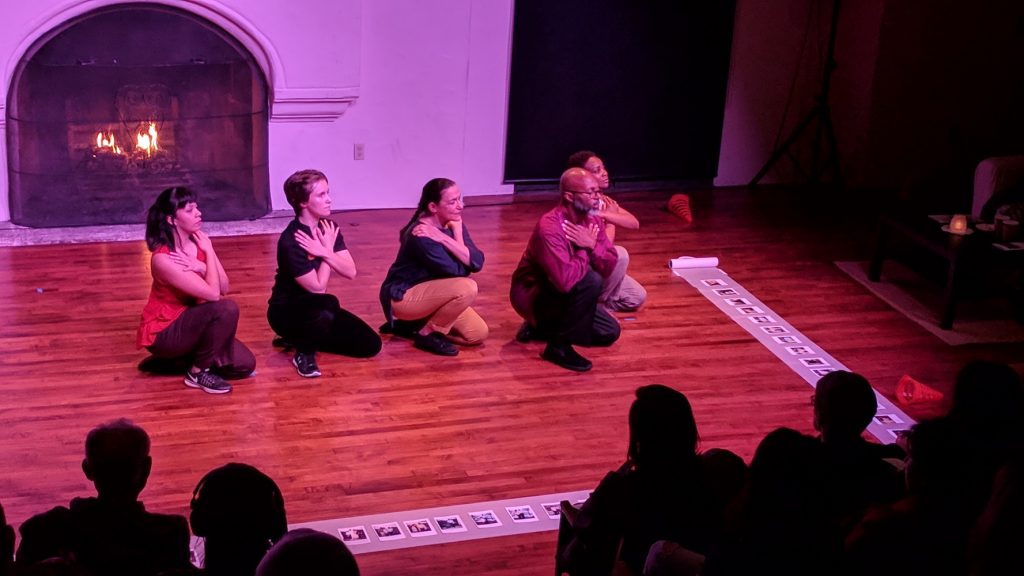
Anna Paz, Amy Oden, Suchi Branfman, Ernst Fenelon, Jr., Cynthia Irobunda in “Angee’s Journey” – Photo: Roger Martin Holman for LA Dance Chronicle
The final section titled Epilogue (Prologue to Action) tugs at one’s heart as we hear Angee’s voice talk about her journey and her son while we watch a beautiful solo performed by Anna Paz to represent Angee. There are family photos and Fenelon talks about the strength that it took his mother to open up and share her emotions, not only with him, but to the world during the making of this documentary.
Film created and edited by Tom Tsai, Produced by Suchi Branfman, and Co-directed by Suchi Branfman and Tom Tsai with video footage by Becca Green, Tom Tsai, and Suchi Branfman. Angee’s Journey was choreographed by Suchi Branfman in deep collaboration with performers Ernst Fenelon, Jr., Amy Oden, Anna Paz, Tom Tsai, and Cynthia Nneka Irobunda, with additional appearances by Angee Fenelon and Jeremiah Fenelon. Music for the documentary was by Paul Smadbeck, Hermeto Pascoal, Nebojsa Jovan Zivlovic, and Ayub Ogada.
The makers of Angee’s Journey hope that groups and/or organization will arrange viewings of the documentary and allow for a period of discussion to follow. In the film credits it states that Angee’s Journey was “danced and created in honor of the tens of thousands of women journeying in support of their beloved family members, who are taken away and locked up inside prisons throughout the United States”. If you would like to contribute to organizations who are working hard to improve the penal system and support those families affected, here is a list of places to do so: Critical Resistance, Dignity and Power Now, California Coalition for Women Prisoners, and Survived and Punished. For more information, contact dancingthroughprisonwalls@gmail.com.
If you have an opportunity to view Angee’s Journey, please take it.
Written by Jeff Slayton for LA Dance Chronicle.
Featured image: ( L to R) Suchi Branfman, Ernst Fenelon, Jr. – Angee’s Journey – Photo by David Torralva

